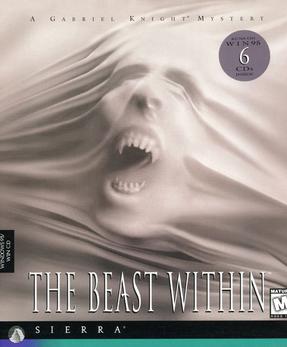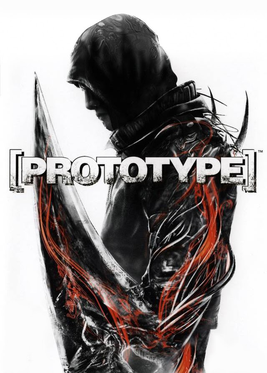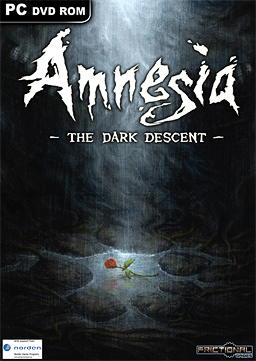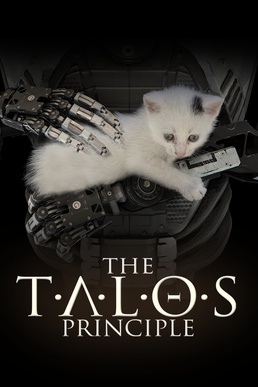
Simon the Sorcerer is a 1993 point-and-click adventure game developed and published by Adventure Soft, for Amiga and MS-DOS. The game's story focuses on a boy named Simon who is transported into a parallel universe of magic and monsters, where he embarks on a mission to become a wizard and rescue another from an evil sorcerer. The game's setting was inspired by the novels of the Discworld series, and incorporates parodies on fantasy novels and fairy tales, such as The Lord of the Rings and Jack and the Beanstalk. The lead character's design was inspired by that of the fictional British television character Blackadder, with the character voiced by Chris Barrie in the CD re-release.

Myst III: Exile is the third title in the Myst series of graphic adventure puzzle video games. While the preceding games in the series, Myst and Riven, were produced by Cyan Worlds and published by Brøderbund, Exile was developed by Presto Studios and published by Ubi Soft. The game was released on four compact discs for both Mac OS and Microsoft Windows on May 8, 2001; versions for the Xbox and PlayStation 2 were released in late 2002. A single-disc DVD version was later released for Windows and Mac OS.

Voyage: Inspired by Jules Verne is a point-and-click adventure game with pre-rendered graphics, developed by Kheops Studio and published by The Adventure Company for the PC in 2005. The game's story focuses on a French adventurer's journey to the Moon in the 19th century, and the ancient lunar civilization he subsequently finds.

Agatha Christie: And Then There Were None is a 2005 point-and-click adventure game developed by AWE Productions and published by The Adventure Company for Microsoft Windows. It was the first in The Adventure Company's Agatha Christie series. The game is a detective murder-mystery; it begins with nine people, including Patrick Narracott, the playable character, who meet and journey to the fictional Shipwreck (Soldier) Island. There, two additional onscreen characters are introduced, and the story then follows the events that unfold.

Jimmy Neutron vs. Jimmy Negatron is a video game for Microsoft Windows and Game Boy Advance. In the game, the player plays as Jimmy Neutron as he tries to stop his evil doppelganger, Jimmy Negatron, from his evil deeds. It was published by THQ and Nick Games and developed by AWE Games (PC) and Human Soft (GBA). The PC version contains a demo for SpongeBob SquarePants: Employee of the Month which was released around the same time.

The Beast Within: A Gabriel Knight Mystery is a point-and-click adventure game, created by Jane Jensen, developed and published by Sierra On-Line, and released for MS-DOS, Macintosh, and Microsoft Windows, in 1995. The sequel to 1993's Gabriel Knight: Sins of the Fathers, the game's story focuses on a new investigation for Gabriel Knight, adjusting to his new life as a "shadow hunter", as he investigates a spate of killing around Munich believed to be the work of a werewolf, with assitance in his work from Grace Nakimura, who looks into a link between the killings and the final years of a Bavarian king in the 19th century.

Penumbra: Overture – Episode One is the first in a series of episodic survival horror games developed by Frictional Games. The game follows a physicist named Philip who travels to Greenland after his mother's death and is forced to explore an abandoned mine. Penumbra: Overture received average reception from critics.

Limbo of the Lost is a 2007 point-and-click adventure game developed by Majestic Studios for the PC. The game follows Benjamin Briggs, the real-life captain of the Mary Celeste, as he explores Limbo. Players act as an omnipresent guide for Briggs during his adventure.

Prototype is a 2009 action-adventure video game developed by Radical Entertainment and published by Activision. It was released in June 2009 for the PlayStation 3, Xbox 360, and Microsoft Windows. In July 2015, the game was re-released alongside its sequel as the Prototype Biohazard Bundle for the PlayStation 4 and Xbox One. Separate versions of the two games became available in August 2015. In Prototype, players control an amnesiac shapeshifter named Alex Mercer as he attempts to stop an outbreak of a virus called Blacklight in Manhattan, which mutates individuals into powerful, violent monsters. Alex also attempts to uncover his mysterious past while coming into conflict with both the US military and a black operations force called Blackwatch. Outside of the main story, players can freely explore the game's open world and engage in several different side activities.

Phantasmagoria: A Puzzle of Flesh is an interactive movie point-and-click adventure game released by Sierra On-Line. The game was released in North America on November 26, 1996. Though technically a sequel to Roberta Williams' 1995 game Phantasmagoria, Puzzle of Flesh shares no connections with its predecessor in plot nor characters, as Sierra initially intended the Phantasmagoria title to be a horror anthology, with each installment of a different story and style. While not a critical or commercial success, A Puzzle of Flesh, like its predecessor, is remembered for its controversial violent and sexual content, which led the game to be heavily censored or banned outright in several European and Oceanic countries.

Frictional Games AB is a Swedish independent video game developer based in Malmö, founded in January 2007 by Thomas Grip and Jens Nilsson. The company specialises in the development of survival horror games with very little or no combat gameplay mechanics. It is best known for its games Amnesia: The Dark Descent and Soma.

Penumbra: Requiem is an expansion pack to the game Penumbra: Black Plague developed by Frictional Games.

Dracula: Origin is a point-and-click adventure game for the PC based on the novel Dracula by Bram Stoker. Released by Frogwares in 2008, it follows the company's catalogue of adventure games such as the Adventures of Sherlock Holmes series.

Amnesia: The Dark Descent is a survival horror adventure video game by Frictional Games, released in 2010 for Microsoft Windows, Mac OS X and Linux operating systems, in 2016 for the PlayStation 4 platform and in 2018 for the Xbox One. The game features a protagonist named Daniel exploring a dark and foreboding castle called Brennenburg, while trying to maintain his sanity by avoiding monsters and unsettling events. The game was critically well-received, earning two awards from the Independent Games Festival and numerous positive reviews.

Anna is a 2012 psychological horror adventure video game developed by Dreampainters Software.

The Talos Principle is a 2014 puzzle video game developed by Croteam and published by Devolver Digital. It was simultaneously released on Linux, OS X and Windows in December 2014. It was released for Android in May 2015, for PlayStation 4 in October 2015, for iOS in October 2017, for Xbox One in August 2018, and Nintendo Switch in December 2019. Virtual reality-enabled versions for the Oculus Rift and HTC Vive were released on 18 October 2017. A DLC entitled Road to Gehenna was released on 23 July 2015.
Penumbra: Necrologue is a third-party total conversion modification released for Amnesia: The Dark Descent in 2014 by CounterCurrent Games. It was in development for 2 years. It continues the storyline after the events of Penumbra: Requiem, and like its predecessors, heavily focuses on exploration and survival.
Tom Jubert is a British video game writer and narrative designer. He is best known for his work on many high-profile games, including FTL: Faster than Light, The Talos Principle, and The Swapper. Although he has worked on AAA games, most of his work has been on smaller indie titles.

Scorn is a survival horror adventure game developed by Serbian developer Ebb Software for Microsoft Windows and Xbox Series X/S. The game is inspired by the works of visual artists H. R. Giger and Zdzisław Beksiński. The game was released on 14 October 2022 for Microsoft Windows and Xbox Series X/S. It also was released for PlayStation 5 on October 3, 2023. It is played from a first-person perspective and has a biopunk theme.

A Plague Tale: Innocence is an action-adventure stealth game developed by Asobo Studio and published by Focus Home Interactive. The game was released for PlayStation 4, Windows, and Xbox One in May 2019. It was made available on the cloud-based service Amazon Luna in November 2020. The PlayStation 5 and Xbox Series X/S versions of the game were released in July 2021, alongside a cloud version for the Nintendo Switch.


















